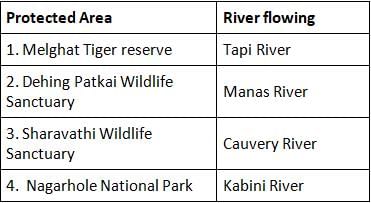General Knowledge Mock Test - 5 - CDS MCQ
30 Questions MCQ Test CDS (Combined Defence Services) Mock Test Series 2024 - General Knowledge Mock Test - 5
The following sentences describe one of the sites of the Harappan civilization:
"It is located on Makran Coast near Gwadar on Iran Border; around 55 km from the shore of Arabian Sea on the Bank of Dasht River. Excavations revealed a twofold division of the township. It was originally a port and later cut off from the sea due to coastal upliftment. It is believed that it was a trade point between Harappa and Babylon."
Which of the following sites does it refer to?
How many electrons are there in the outermost shell of a group 16 element?
| 1 Crore+ students have signed up on EduRev. Have you? Download the App |
Who was installed as Malaysia's 17th king in January 2024?
India's highest civilian award, the Bharat Ratna, honored the indelible contributions of distinguished individuals in 2024. Who among the following was NOT a recipient?
Which of the following are the Core Industries in the Index of Industrial Production (IIP)?
1. Textile
2. Coal
3. Construction
4. Natural gas
5. Fertilizers
6. Crude Oil
7. Refinery
Select the correct code given below.
Which of the following National Film Awards has been renamed in Feb 2024?
Consider the following statements:
1. Blackbuck is found only in the Indian subcontinent.
2. Lion-tailed macaques are naturally found in India only.
3. Pygmy hog is naturally found in India only.
How many of the above statements are correct?
Which one of the following best describes the term "Marginal Cost of funds based lending rate (MCLR)" sometimes seen in news?
With reference to India physiography, consider the following statements:
1. The western coasts, being emergent coasts provides natural conditions for the development of ports and harbours.
2. The rivers flowing through the eastern coastal plain develop deltas, hence less number of ports and harbours.
Which of the statements given above is/are correct?
Which of the following fall within the purview of the Capital Account under the Balance of Payments?
1. Dividends on foreign assets which are abroad
2. Gifts from abroad
3. Foreign institutional investment
Select the correct answer using the code given below.
Consider the following statements:
1. Igneous rocks are also called secondary rocks.
2. Sedimentary rocks contain fossils of plants, animals, and other microorganisms.
3. Extrusive igneous rocks have a very fine-grained structure.
4. Sandstone is made from grains of granite.
How many of the above statements are correct?
The objective of the Raleigh Commission of 1902 was to
With reference to precipitation an distribution of rainfall, consider the following statements and choose the incorrect one.
Which of the following are regarded as 'Ecosystem services'?
1. Soil formation
2. Nutrient cycling
3. Habitat for wildlife
4. Climate regulation
Select the correct answer using the code given below.
Deficiency of which of the following nutrient causes retarded growth in plants?
With reference to the principal feature(s) of the Government of India Act, of 1919, consider the following statements
1. Responsible government was envisaged in the Act for the government at the all-India level.
2. A bicameral arrangement was introduced.
3. Introduced diarchy in the executive government of the provinces.
How many of the above statements are correct?
Which of the following is/are the reasons behind the loss of biodiversity?
1. Over-exploitation
2. Co-extinctions
3. Fragmentation of habitats
Select the correct answer using the code given below.
With reference to India, the terms 'Thumari', 'Tappa' and 'Kajari' pertain to
Consider the following statements with respect to Acid Rain :
1. It is primarily caused by the emission of sulfur dioxide and nitrogen oxides.
2. It is rain with a pH of less than 5.4
Which of the statements given above is/are correct?
What is the primary purpose of the cVIGIL app launched by the Election Commission?
Consider the following pairs:

Which of the pairs given above is/are correctly matched?
Which one of the following protected areas is well-known for the conservation of a subspecies of the Indian elk (Hangul) that thrives in dense riverine forests in the high valleys and mountains?
With reference to the Hoysala Dynasty, which of the following statement is correct?
With reference to the Indian Freedom Struggle, which of the following statement is correct?
What is the newly approved name for Ahmednagar city by the Maharashtra cabinet?
Which instruments made in Miraj have received Geographical Indication (GI) tags?
With reference to the Finance Commission, consider the following statements:
1. It determines the method and formula for distributing the tax proceeds between the Centre and states.
2. Its recommendations are only advisory in nature.
Which of the statements given above are correct?
|
23 docs|73 tests
|
|
23 docs|73 tests
|




























